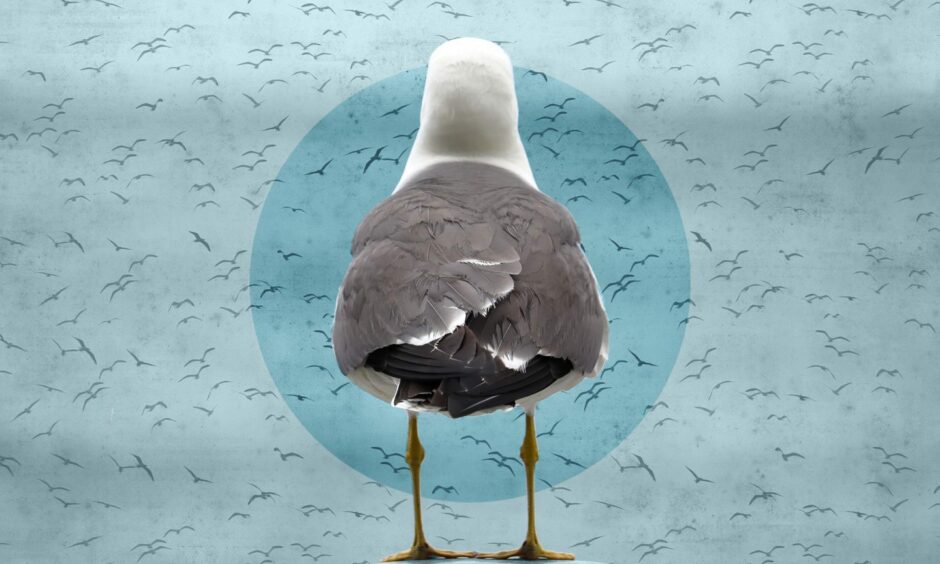
Love them or hate them, seagulls have been part of our coastlines for hundreds of years.
But despite dominating our beaches, stealing our chips and keeping us awake with their squawks, many know so little about these feathered friends… or foes.
Here we tackle some of the most frequently asked questions about perhaps the most often-spotted species of seagull in Scotland, as well as a few other gull misgivings.
Just how big are seagulls?
Herring gulls are one of the largest species of gulls in the UK. They are found everywhere in our coastal communities.
With a wingspan of about 160cm (about the length of an average woman!) and growing to around 1.4kg in weight, they’re pretty big.
In contrast, a sparrow weighs about 30 grams and has a wingspan of around 25cm.
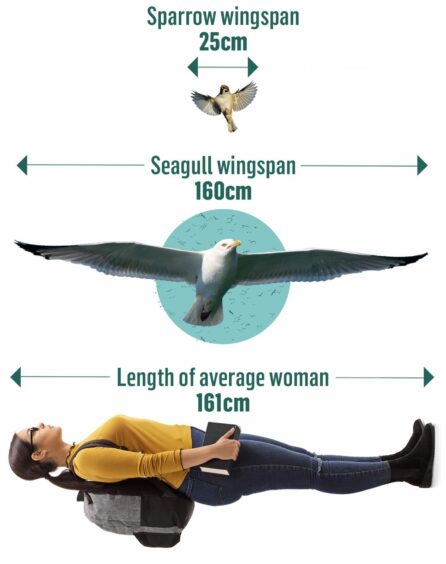
Apart from ripping up my bin bags, where are they usually found?
But the birds, fondly known as “scurries” or “scorries” depending where you’re from, are often spotted inland around towns and cities, near rubbish tips, across farmland and various other water bodies too.
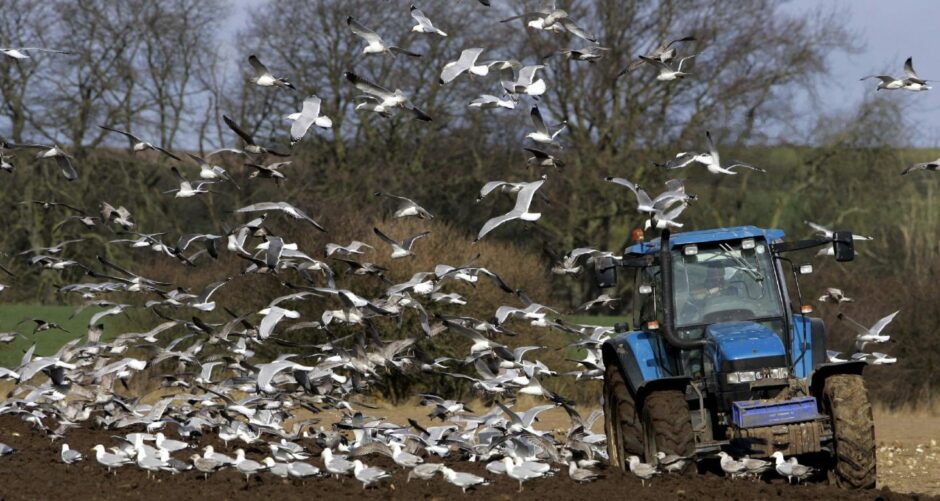
How do I know if it’s a herring gull?
…and black tips to their wings with small white blotches.
They have faded pink legs with webbed feet…
…and their beak is slightly hooked, yellow in colour with a red spot.
Nobel-prize-winning animal behaviour scientist, Niko Tinbergen, found newborn herring gull chicks instinctively beg when they see a red spot (even when the spot is not on a gull).
Young herring gulls are difficult to separate from other species but are a similar size to the adults and covered in varying amounts of speckled brown feathers depending on their age and the season.
What do seagulls eat?
Just like most other gulls, herring gulls are opportunist feeders and will eat anything they can fit down their throats.
This is one of the reasons they are considered to be such a nuisance with outdoor eaters feeling frequently under threat.
But their natural diet includes scraps, carrion, seeds, fruits, eggs, fish, insects and shellfish.
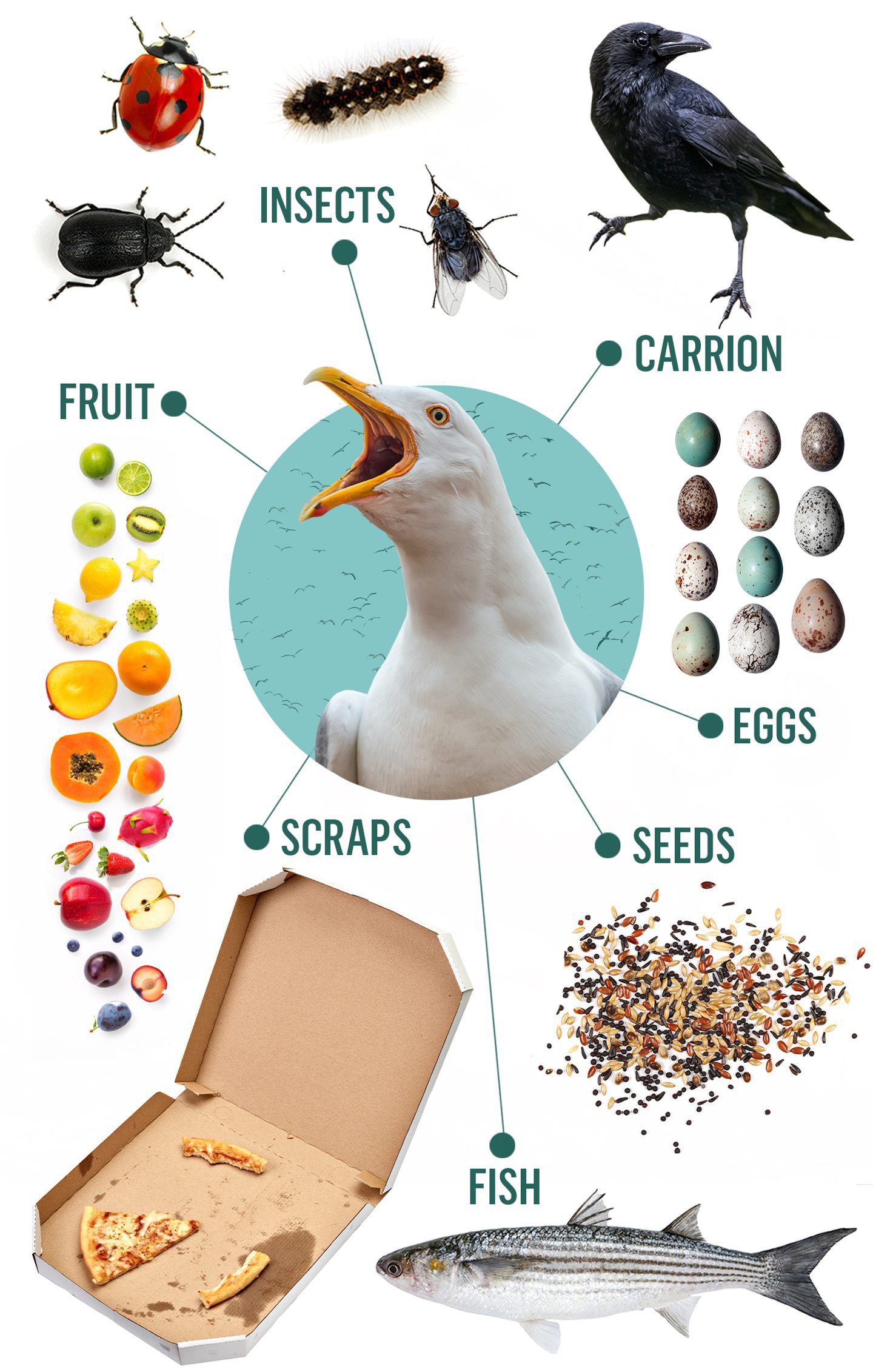
They will even take other birds and small mammals if they can catch and overpower them.
…will consume approximately 20% of its body weight every day in food.
That’s between 5 to 10oz of food.
This is the equivalent of a 10-stone adult consuming two stones worth of food a day…
That equates to a human consuming 59 Big Macs a day.
Is it against the law to give them food?
It is not illegal to feed herring gulls however, in order to prevent them from becoming a problem it is advised people keep their bins contained and don’t leave food scraps for them to become attracted to.
The birds are also very clever and will even mimic the sound of rain on the grass by repeatedly tapping their feet.
This tricks worms and other insects into popping their heads above the surface – where they become easy pickings.
Juvenile Herring gull learning the art of 'rain dancing'. pic.twitter.com/uEhwTuJ3wV
— Raymond Cannon (@rcannon992) January 8, 2022
When do seagulls nest?
Herring gull nesting season begins in May when both adults begin to construct a large cup-shaped nest out of vegetation, moss, mud and in urban areas, litter.
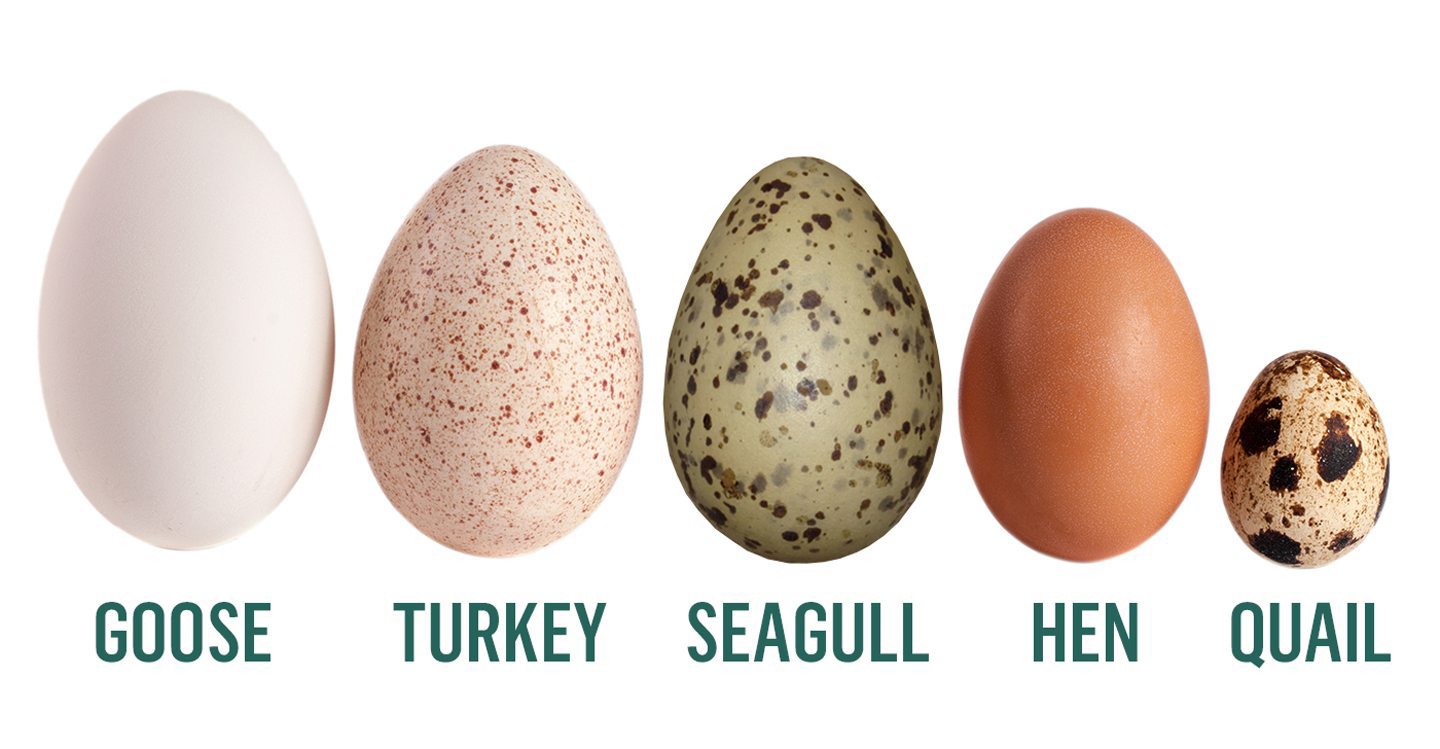
Naturally, these nests would be on cliff edges but most herring gull colonies in the UK are in towns and cities where they take advantage of our flat-roofed buildings and the safety they can provide from terrestrial predators.
These nests will often be built close to other nesting gulls including those of similar species such as the lesser black-backed gull.
Is it true they mate for life?
Each pair will lay an average of three speckled olive-brown eggs that measure around seven centimetres in length.
The pair, who generally mate for life, share the incubation duties and guard the nest site ferociously.
If there are any perceived threats all of the nesting gulls take to the air together swooping at, and trying to poo on, whatever they perceive as a danger.
How long do they nest for and when are they fully grown?
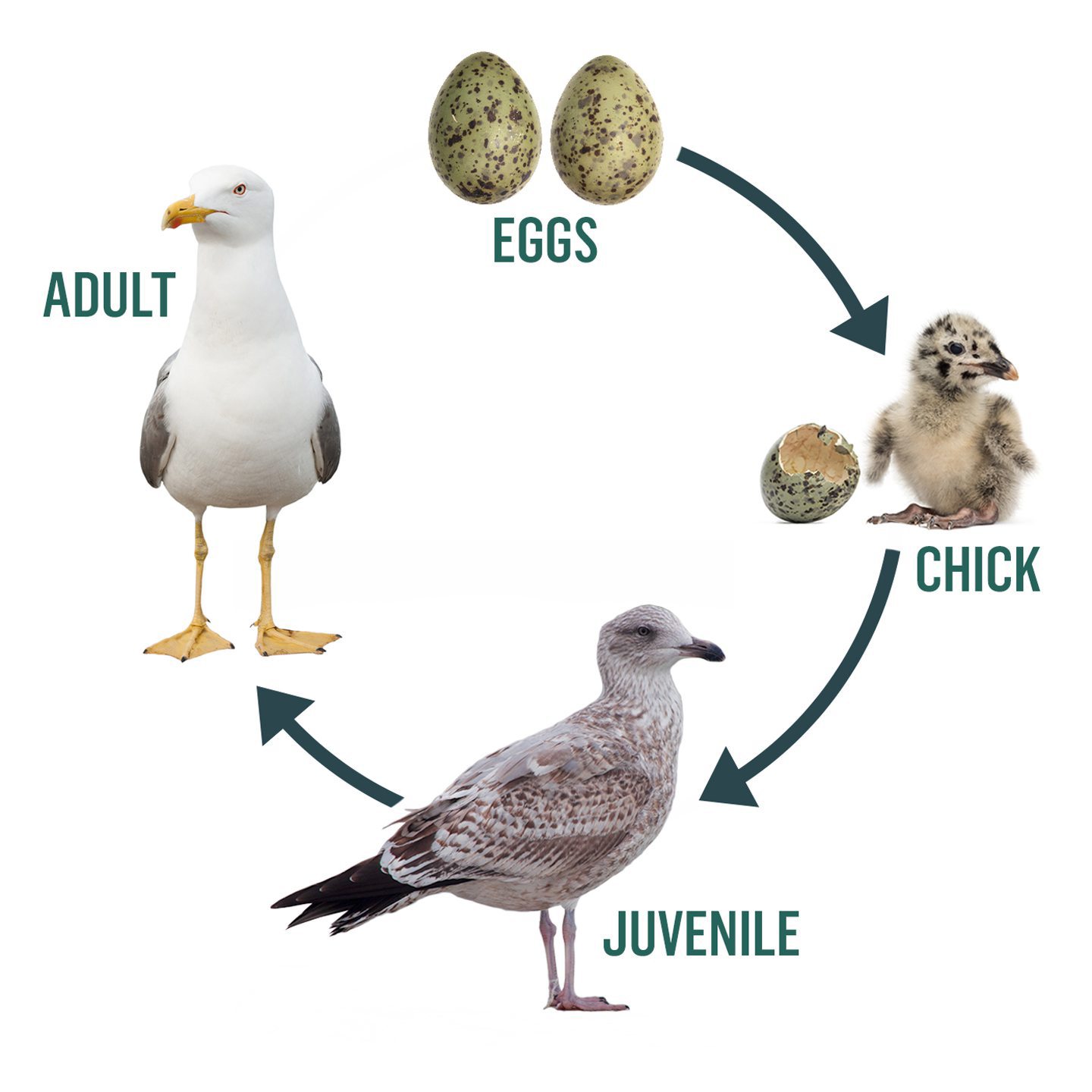
After 31 days, the eggs hatch and the young fluffy grey chicks emerge.
At first, they stay close to the nest but soon they begin to wander close to the nesting site continuously begging for food from the parents.
Over the next 40 to 50 days the young herring gulls grow fast and soon begin to stretch their wings and attempt their first flights.
This doesn’t always go to plan and the young gulls often end up on the ground away from their nests – but always under the watchful eye of their parents.
Once flight has been perfected, or at least achieved, the young gulls follow their parents for the next four to six weeks before they become fully independent.
By this time they are covered in mottled brown feathers which change bit by bit for the next four years until they get their adult plumage.
Why can’t I just get rid of them myself, are they not just vermin?
There are currently an estimated 740,000 herring gulls in the UK but they have suffered a decline of about 60% in the last few decades and their numbers continue to fall.
They are listed with a red UK conservation status.
This has led to the recent tightening of restrictions on culling the species and it is hoped their numbers will begin to stabilise soon. It is illegal to intentionally injure or cull gulls in Scotland.
How long do seagulls live?
Herring gulls can be quite long-lived with an average lifespan of around 12 years – and one even living to 49.
This is substantially older than smaller birds like sparrows which tend to live for around three years.
Seagulls are very old creatures. They’ve existed on the planet for at least 30 to 33 million years.
They are one of the rare animals that are able to drink salt water as they have special glands (located above the eyes) which eliminate excess salt from the body.
Main predators of seagulls are large birds of prey, such as eagles.
Doesn’t my local authority have to act to deal with nuisance gulls?
Local authorities have no obligation to deal with the sea birds and the nuisance they can cause.
Aberdeen City Council says it receives almost 200 complaints and inquiries each year concerning gulls, most of these are around nuisance from aggressive behaviour, noise and damage to buildings. In comparison, they receive just over 50 each year relating to rats.
These occur mainly between April and September when the gulls arrive to nest and raise their chicks, although an increasing number are choosing to remain in Aberdeen all year round.
What can I do to protect my property?
If property owners are suffering from nuisance behaviour they are advised to discourage gulls from nesting by erecting deterrent devices on chimney heads and flat roof areas.
Deterrent methods include:
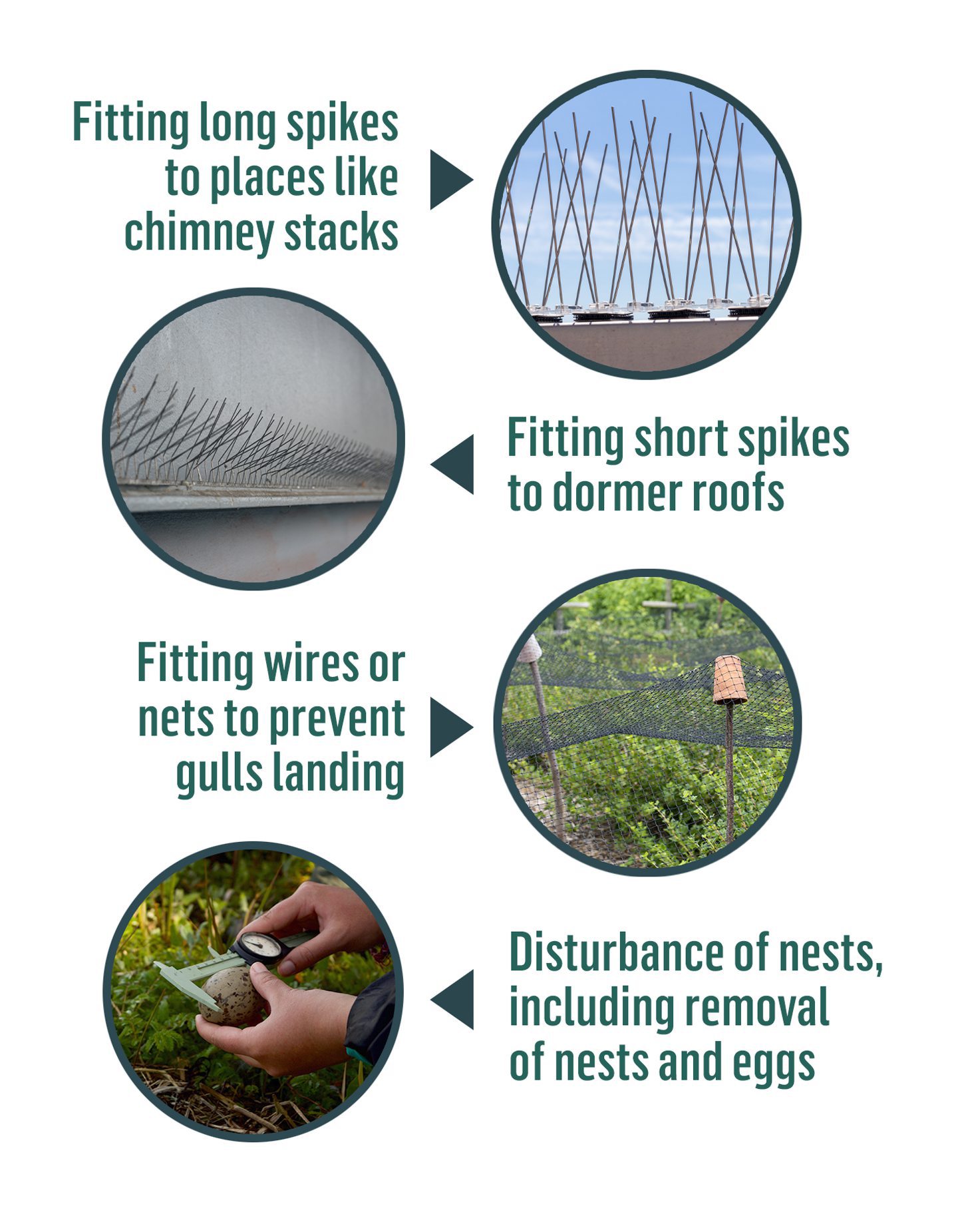
If gulls nest on your property, you can arrange for the eggs to be pierced or oiled to prevent hatching or to have them removed and replaced with imitation eggs.
The nest will then have to be checked every three weeks to ensure that no new eggs have been laid.
Environmental Health has no statutory duties or powers to act against gulls.
If you come across an injured seagull it’s advised you call an animal welfare society like Scottish SPCA or a local animal shelter, like The New Arc in Aberdeenshire, or Blue Highlands Bird Rescue in Brora.
Can gulls actually help keep our city centres clean?
It may sound far-fetched, but at a public event on the future of Aberdeen city centre a novel form of street-cleaning was suggested.
David Hunter, from The Habitat People, believes the intelligent creatures could be trained to pick up rubbish.
Credits
- Words by Rebecca Buchan
- Graphics by Clarke Cooper
- Scrollytelling by Lesley-Anne Kelly
- SEO by Jamie Cameron
- Story design by Cheryl Livingstone
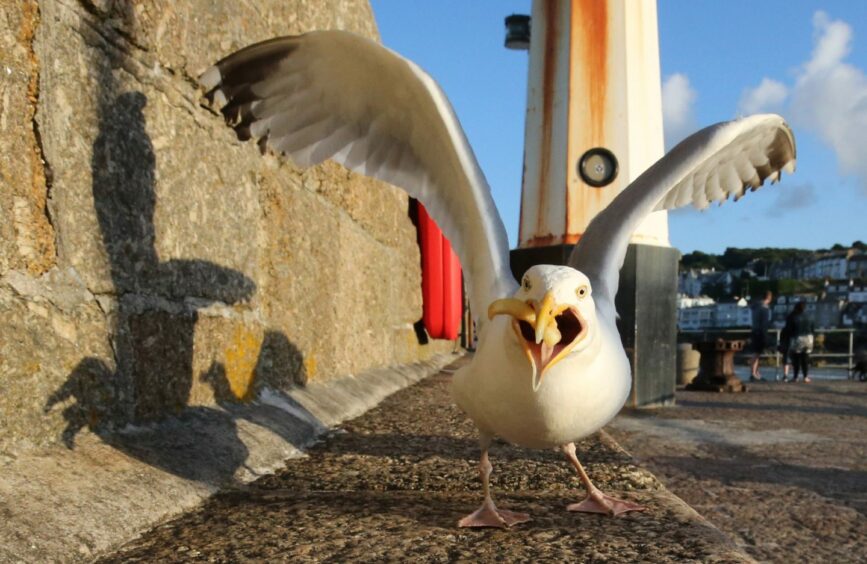
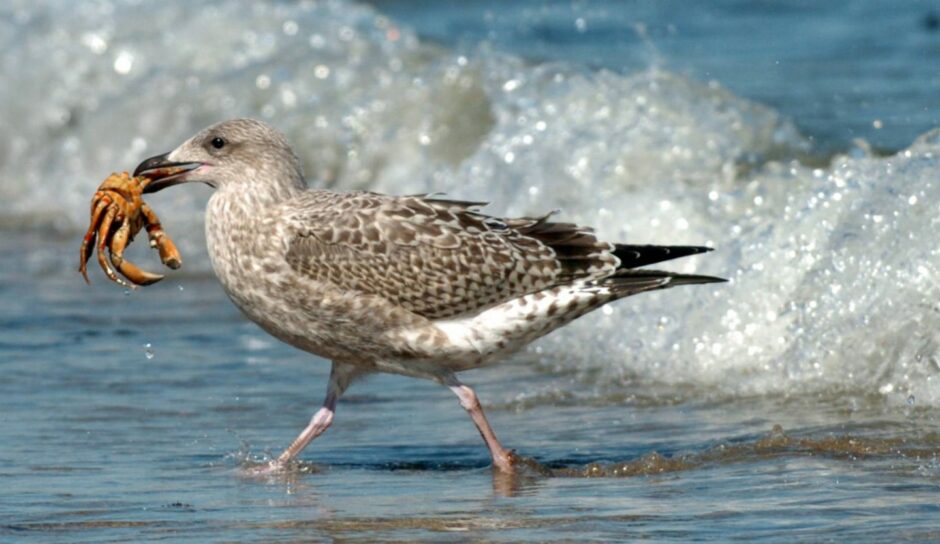
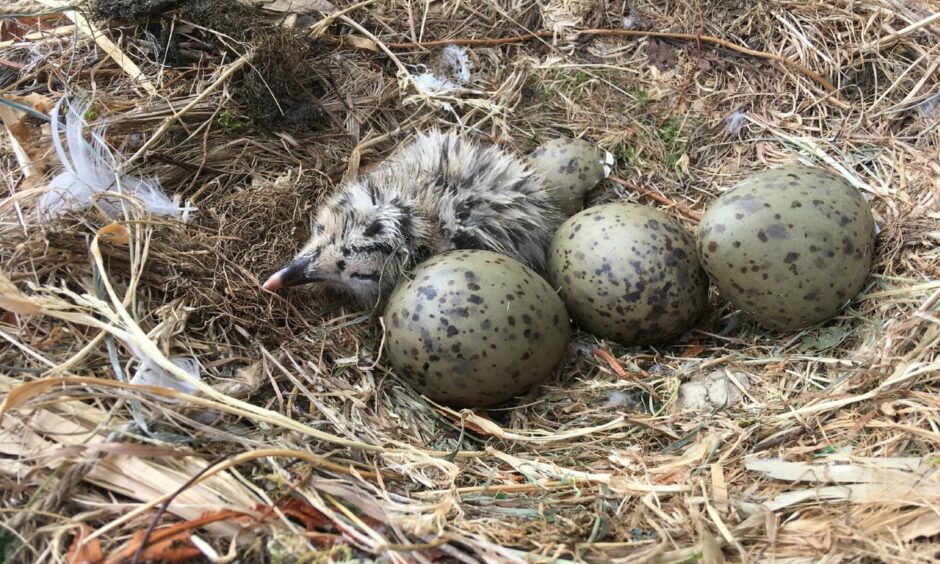
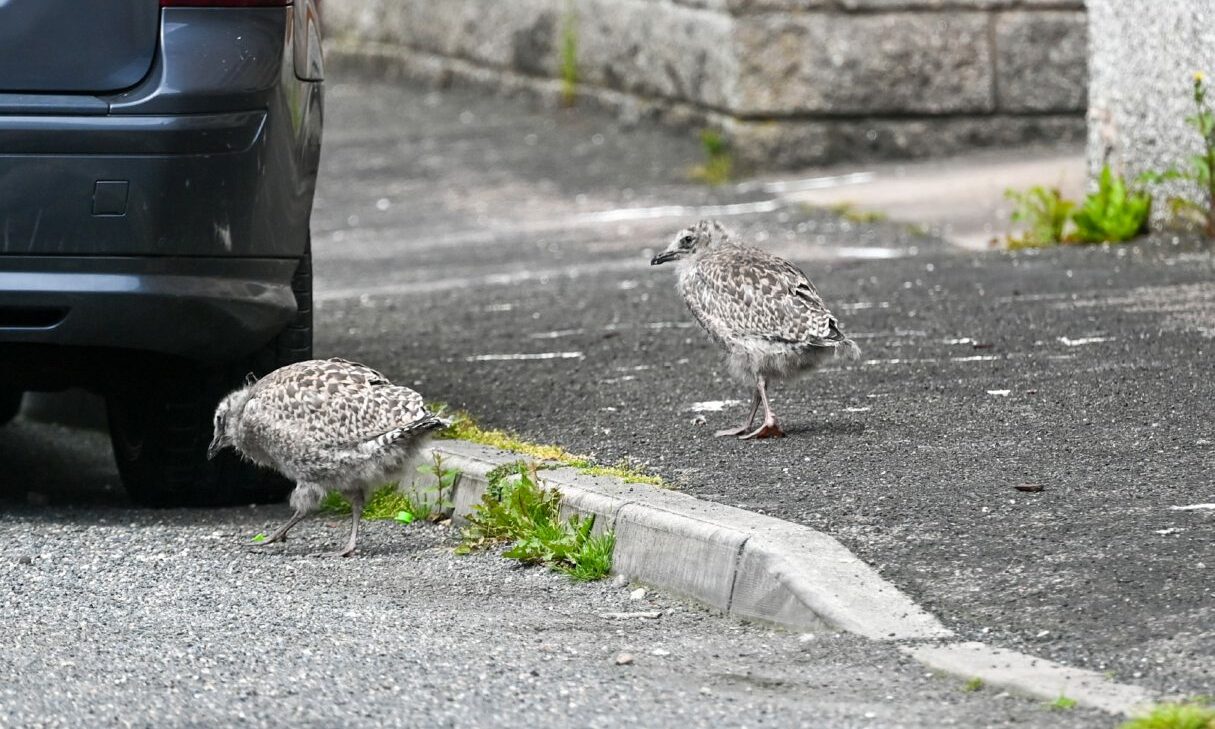
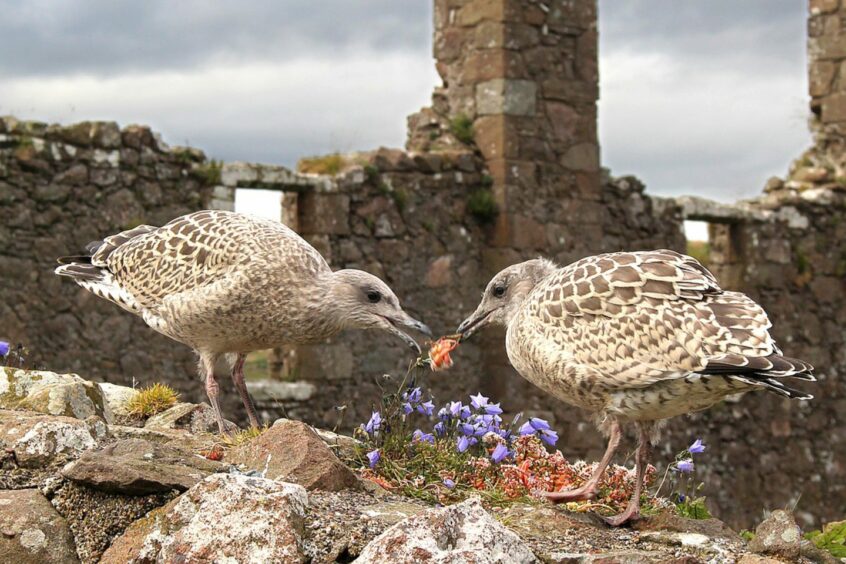
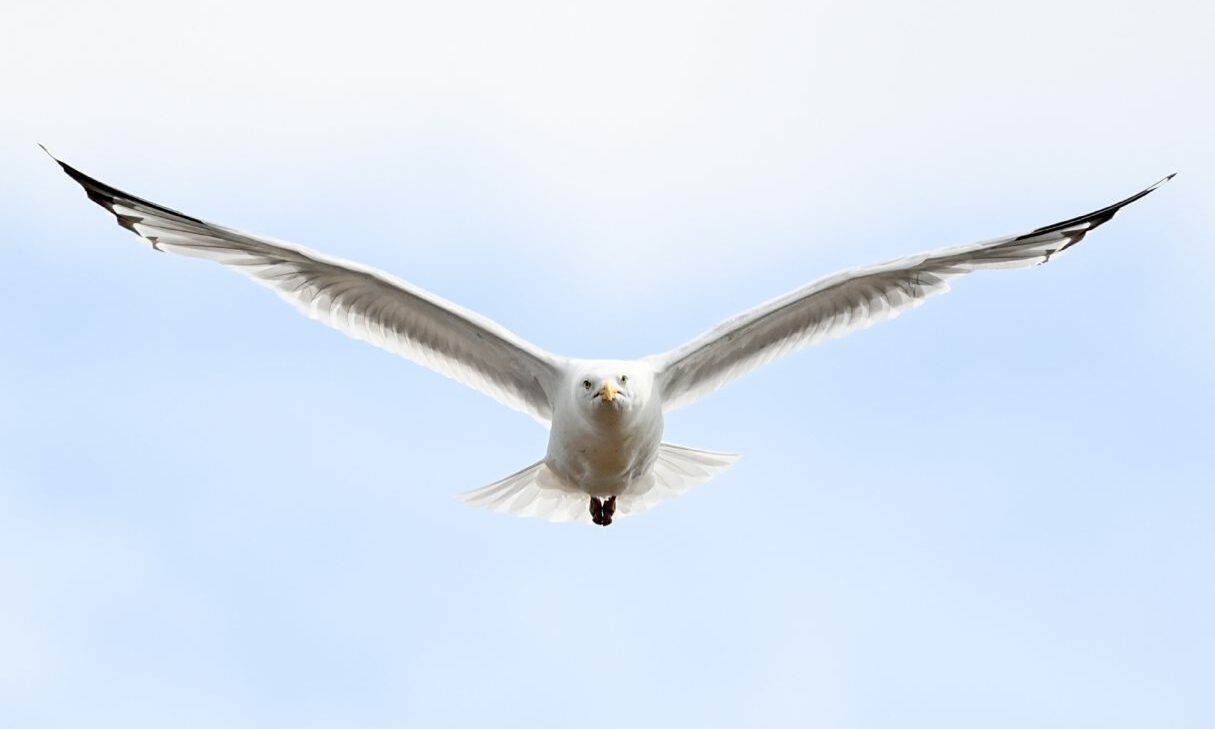
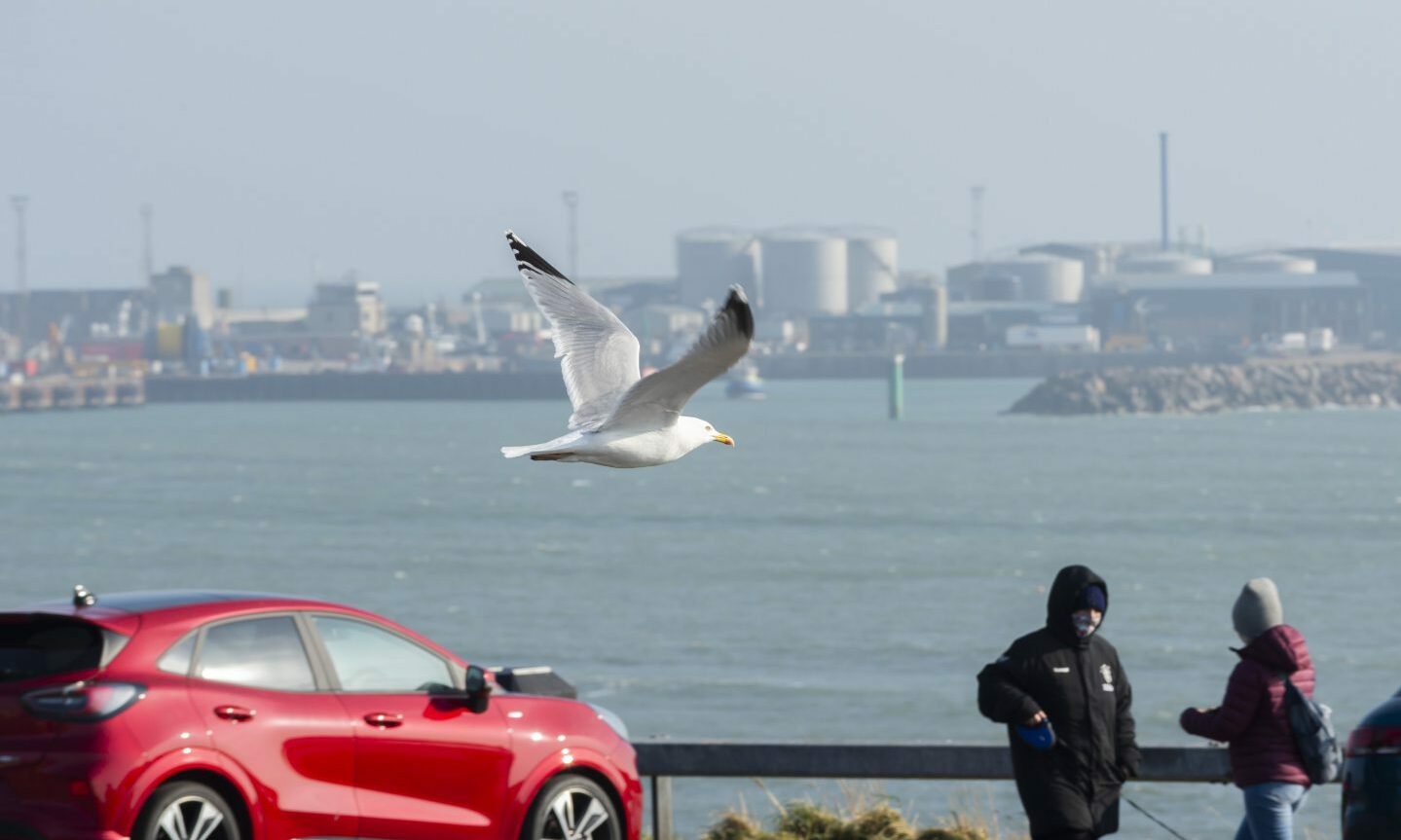
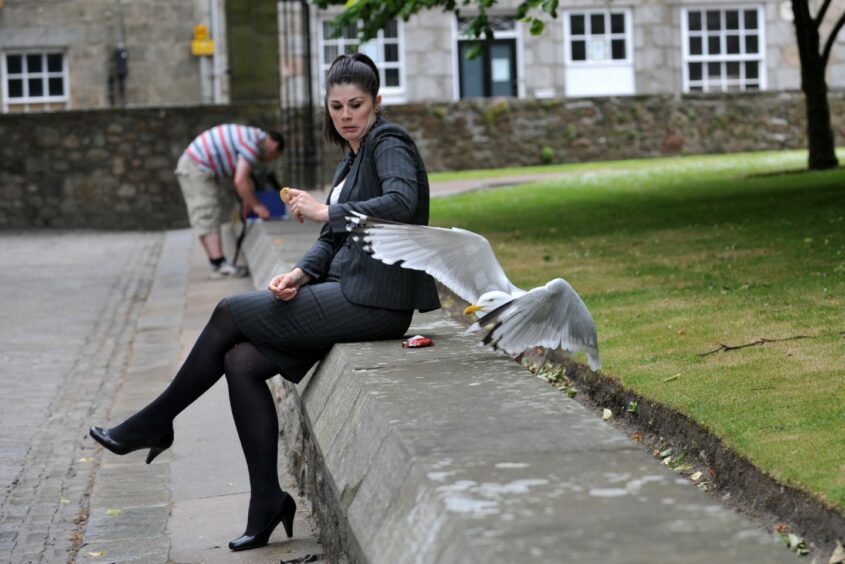
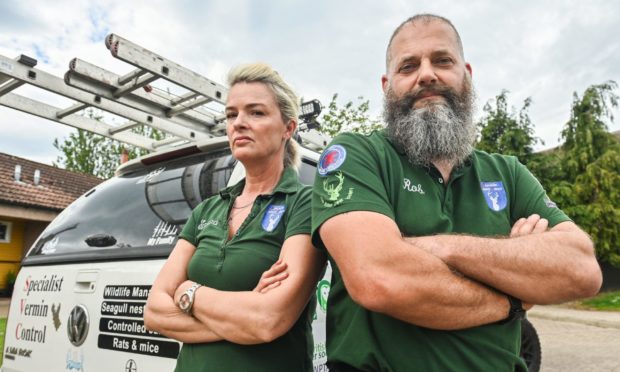
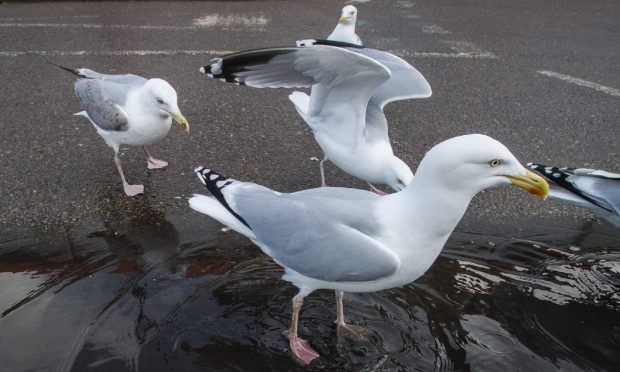
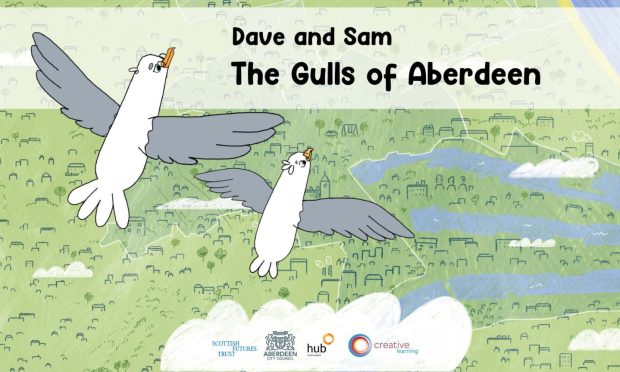
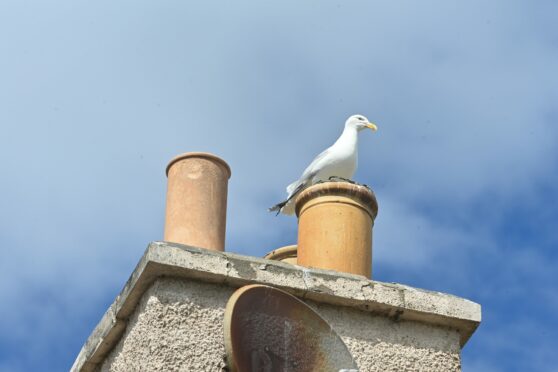
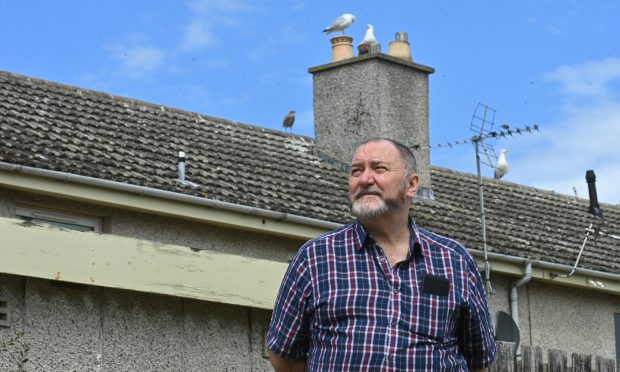
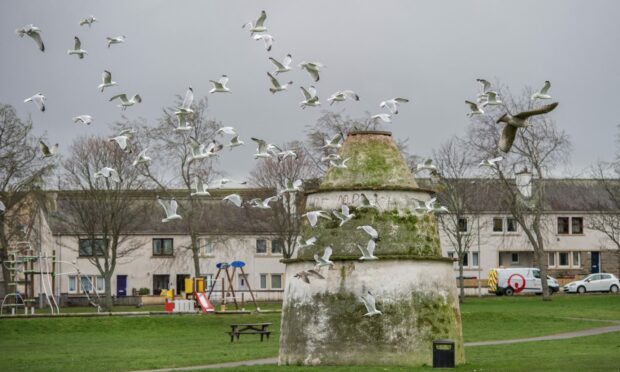
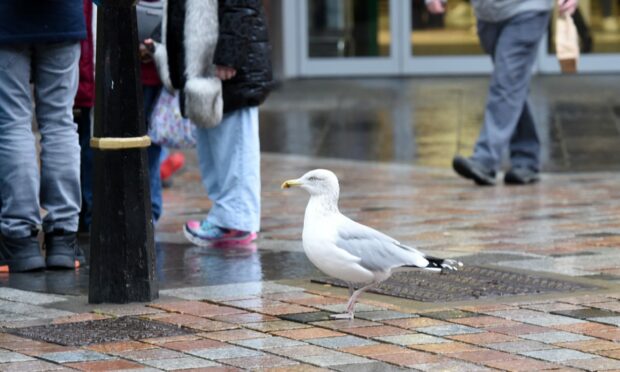
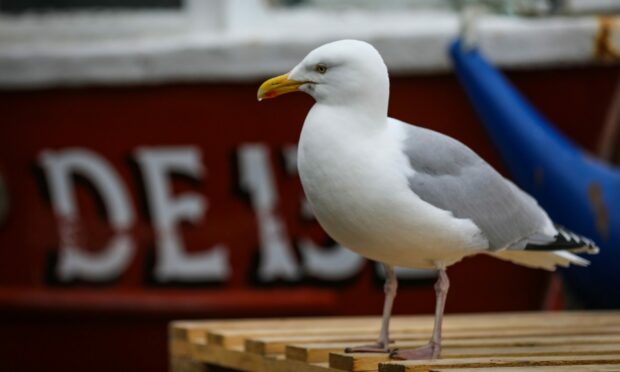

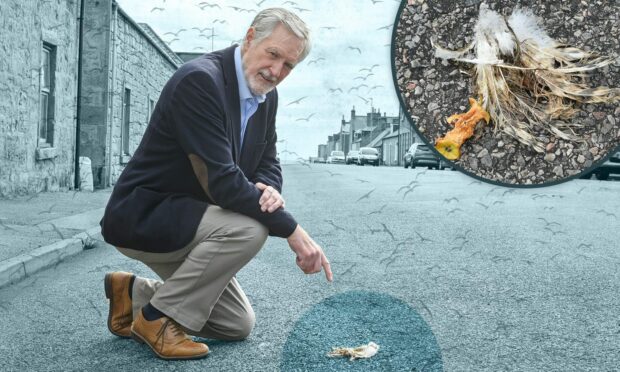
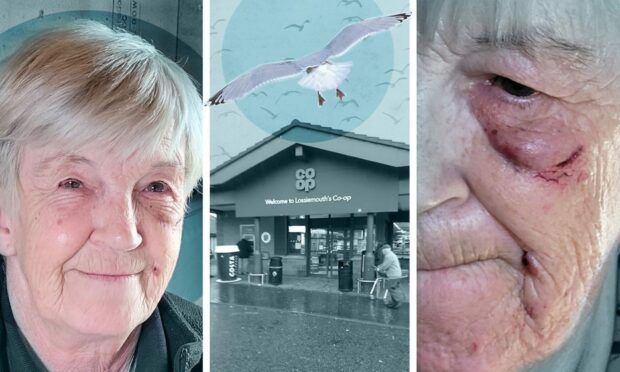
Conversation